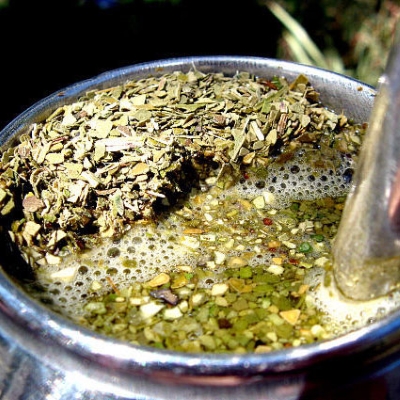All about Yerba Mate. Demography of production.
 |
Demography of production There are only three producers of yerba mate in the world: Argentina, Brasil and Paraguay. As an indication of their relative importance we can consider the 1999 campaign. The total production of yerba mate canchada (pre-ground) that year was about 500.000 tons, the amount produced by each country is indicated in the table bellow.WORLD PRODUCTION (yerba canchada 1999)COUNTRY & PARTICIPATION (%)Argentina 62%Brasil 34%Paraguay 4%Total 100%Source: Secretaría de Agricultura, Ganadería Pesca y Alimentos based on information given by the Foreign Commerce Bureau Misiones province.As the table shows, Argentina is by far the main producer of yerba mate in the world. It is also the main exporter. Brasil in turn is the second producer, and, at the same time, the main importer. In Argentina, this crop is found in the north-eastern region --Misiones and NE Corrientes provinces. Despite having similar climates, production models of these two provinces are quite different as they also differ in the relative weight of the yerba mate production in their economies. While it is the main crop in the Misiones province, representing up to 60% of its gross revenue, in Corrientes it only amounts to 7%. In Misiones, the larger number of farms are small family holdings, with production being sold to mills located in the province or elsewhere. In Corrientes, the big yerba mate companies have set up plantations of large dimensions, working in an integrated fashion from harvest to the supermarket shelves. Misiones is the main producer, accounting for almost 90% of the Argentinian production. For that reason we will look at its production more closely. |
 |
|
|
ЧЕМ ПОЛЕЗЕН МАТЭ?
• устраняет усталость, стимулируя умственную и физическую активность. • оказывает благотворный эффект на нервы и мускулы • способствует интеллектуальной работе. Благодаря основному эффекту ксантина совместно с активностью других веществ, сердечно-сосудистая деятельность дает организму силы. Ксантин оказывает всем известный эффект на центральную нервную систему, стимулируя умственную энергию. Как пьют матэ? Традиционно матэ заваривают не в чашке, а в калабасе (специальный сосуд из тыквы). В него вставляется бомбилья (напоминает тонкую ложечку с ситечком на конце). Через бомбилью пьют матэ. Употребление матэ путем пролива по-научному называется ПЕРКОЛЯЦИЯ – (максимальное извлечение активнодействующих веществ путем пролива через растительное сырье большого количества воды). Таким образом равномерно извлекается 75% полезных веществ. Тогда как при настаивании всего 35%. Надо знать, что Йерба Мате пьется только одним способом и именно путем пролива, а не настаивания.




